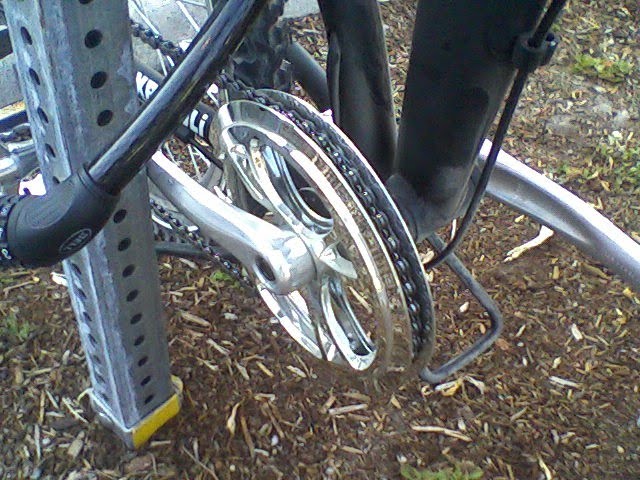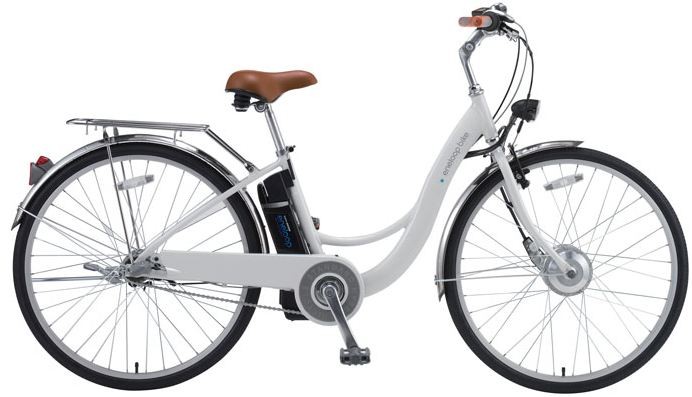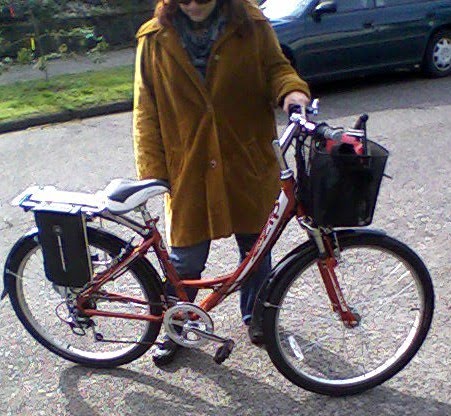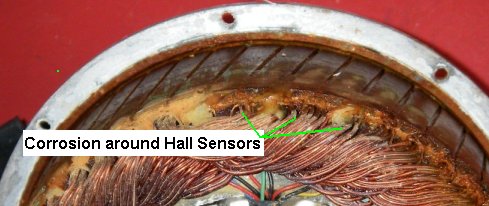I spotted an interesting looking electric bicycle in front of my neighborhood grocery store a while back. The picture you see below came from an owner’s manual I found on the internet.
It has some nice features like:

1) A centered kickstand (electric bikes tend to be top heavy)
2) Front and rear disc brakes (will never wear a hole in your rim)
3) A pivoted rear wheel frame (loose tail to protect electronics and your butt)
4) A cargo rack that fits on a loose tail (a feature easier said than done)
5) Lithium ion batteries (never buy a bike with lead acid batteries)
6) It folds in half (nice if you don’t have a bike rack and can lift it into trunk)
7) No front derailleur (not needed)

However, at 24 volts it will be underpowered.

I don’t know what the “XB-310Li” costs but the Sanyo Eneloop pictured above costs about $2,000. I do know which bike looks cooler.
The bike below was purchased by one of my neighbors off Amazon for about $300. I believe it is 24 volts and uses lead acid batteries.


What do all of these bikes have in common? They were all bought off the internet and as soon as any electrical component fails the owners are out of luck because there are no repair shops for them (unless they can do their own troubleshooting and soldering, assuming they can get parts as well). The lead acid powered bike will fail before the year is out guaranteed because that’s about all you get from lead acid.
Those of us who have built our own bikes are looking to iterate toward better and better designs. For example, ideally, you would get rid of spokes on the wheel that has the motor because they always stretch, get loose, and eventually fail.
http://www.goldenmotor.ca/images/20inMagicPie2.jpg>
Above photo from Golden Motors



Above photos from Grin Technologies
The price may be right for some of these Chinese electric bike parts, but reliability and support can be very dicey.
The Chinese market for electrified bikes and scooters is gargantuan. There isn’t much money to be made in the paltry American market.
The people at the Canadian business called Grin Technologies are filling a niche. They designed the legendary CycleAnalyst and now have a lighting system that can be run off just about any battery pack.
Buying an electric bike sight unseen off the internet is asking for trouble and most people don’t have an electric bike shop in their neck of the woods that sells and services electric bikes that don’t look like something your grandma would ride.
That leaves the DIY option, which for now is a good option if you are willing and able to learn and experiment. Home built bikes often outperform the best store bought ones for a fraction of the cost. The 1000 watt limit for ebikes in California and Washington state has blurred the line between human powered with electric assist and electric powered with human assist. But that’s OK. If we are going to break the stranglehold internal combustion cars have on us we will need a little room to maneuver and experiment.
Crossposted from the Biodiversivist blog



